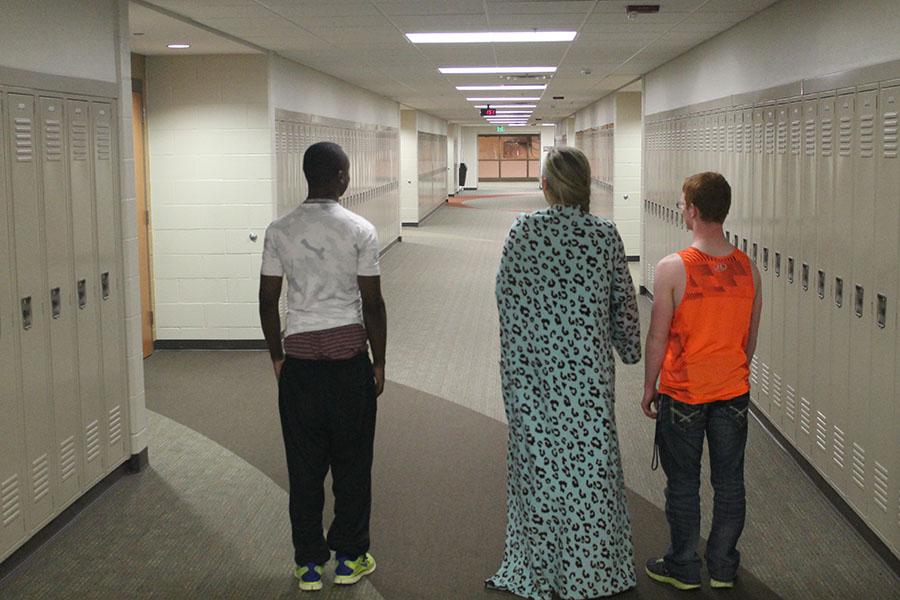Dress to impress: students speculate over the fairness in the school’s policy
‘If a student has selected a manner of appearance that is beyond mere freedom of expression and disrupts the educational process… they may be removed from the educational setting.’ -PN Dress Code. It’s no secret that here at Portage Northern, there is a widely despised and unpopular policy that many students, particularly girls, harbor animosity towards: The Dress Code (Dun Dun Duuunn). School would be chaotic without some form of dress code, but the discipline of said policy in this school is inconsistent and biased.
“I think that some of the messages on [guys’] shirts are less conducive to a learning environment (than) showing a shoulder,” said Henry Poznanski (11). Believe it or not, the school’s dress code never mentions anything specifically prohibiting spaghetti straps, tank tops or short shorts. The rule states that no underwear can be seen and it should not be too revealing. This leads each individual teacher or hall monitor to interpret the enforcement, leading to confusion as to what is actually acceptable to wear. “All the teachers aren’t on the same page with discipline, [because] some people get away with it,” said Jackie Pattison (10). Obviously, every student has some idea of what is appropriate to wear to school, but many kids change even though they may not be doing anything wrong.
Distractions in the school setting come in many forms, including but not limited to revealing clothing. Pattison argues that some of the attention-grabbing clothing that people wear can be just as distracting as inappropriate shirts and shorts. Crazy hair, fishnet stockings and super high heels definitely catch people’s eyes during class. Distraction is inevitable in the classroom, and an exposed shoulder can sometimes be the smallest disruption a regular student faces during the day.
Another complaint regarding the dress code is that girls are punished or sent home for dress code violations more often than boys. Regarding her experience seeing boys being disciplined for their outfits, Mackinley Prentice (11) said, “I’ve only seen someone be like, ‘Hey pull up your pants’… and they will for like two seconds, and then they’ll fall back down.” The large number of boys who sag their pants or wear vulgar t-shirts to school is nowhere near the amount of boys who are actually sent home for their outfits.
Girls are told that they must dress a certain way so they will not distract boys from their education. This makes girls feel that they cannot wear what they want because they are afraid of harassment. However, some feel that the shaming of the female body has less to do with the school’s personal dress code and more to do with society’s expectations of women. “Just because of my body type, I shouldn’t be punished and not be able to wear what I want,” said Lyric Muraoka (10). For girls with extra-long legs or larger chests, it can take a herculean effort to find any clothes that fall into the school’s policy and still be even remotely cute. “Social media is constantly telling girls that we have to work on how we look,” continued Muraoka. “Why are we taught to dress a certain way instead of boys being taught to be respectful?”
Dress codes have been a source of rebellion between students and teachers for many years. It’s important to keep in mind a balance between self-expression and showing up in a respectful, appropriate outfit. If students can monitor themselves and if teachers can be more consistent in their disciplinary choices, the dress code could eventually cease to be an issue of controversy and just become a perfunctory action. Communication, equality and understanding is key to creating an efficient school atmosphere.




